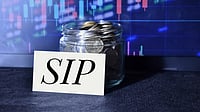Sponsored Content
Markets rarely behave like calm seas. Instead, they move in tides, pulled by the underlying rhythm of the economy. Economists call this rhythmic pattern - the business cycle: the sequence of expansion, peak, slowdown, and recovery that shapes everything from company profits to investor returns. For those willing to study the cycle rather than fear it, opportunities abound.
The Nature of the Cycle
Business cycle is not a neat circle on a chart. It is a mix of growth and contraction, often stretched or shortened by shocks, policies, or plain human misjudgement. At its heart, however, it tells a simple story. When growth is strong, businesses hire, wages rise, and consumers spend. At some point, the momentum overheats: inflation creeps in, central banks tighten policy, and growth slows. Then comes the downturn. Demand softens, profits shrink, and job losses follow. Yet even recessions contain the seeds of recovery: lower interest rates, cheaper valuations, and new cycles of investment.
Why Investors Care
For investors, the cycle is not theory but reality. Corporate earnings are cyclical, borrowing costs are cyclical, even investor moods are cyclical. Timing these turns with precision is nearly impossible. But understanding where the economy broadly sits helps shape portfolio strategy. Ignoring the cycle is like sailing without noticing the weather: you might get lucky, but more often you will be caught unprepared.
Expansion: Growth Stocks and Risk Appetite
During expansion, optimism rules. Sales rise, profits fatten, and credit is easily available. Equity marketws tend to reward growth companies—those investing heavily to capture demand. Cyclical sectors such as consumer durables, autos, and capital goods thrive. Investors willing to take on risk often find this the most rewarding phase, though it is also when valuations creep into uncomfortable territory.
Peak: Defensive Moves
Peaks are harder to spot. They appear only in hindsight, when the data confirms what investors already suspected. This is when inflation bites and interest rates peak. Here, moving into defensive sectors, healthcare, utilities, and consumer staples can cushion a portfolio. These businesses sell what people must buy regardless of the economy. Cash allocation also deserves more attention, though too much caution too early means missing late-cycle rallies.
Slowdown: Value Opportunities
The slowdown feels grim: earnings fall, defaults rise, and news headlines scream recession. Yet for the patient investor, this is the bargain-hunting season. Valuations reset, and good companies trade at discounts. Value stocks, high-quality bonds, and gold find favour. The risk lies in mistaking a falling knife for a cheap gem. Diversification and discipline matter more than ever.
Recovery: Cyclical Plays
Recoveries begin quietly. Policy support filters through, inventories are rebuilt, and hiring restarts. Markets, ever forward-looking, often surge before the data turns. Cyclical sectors—banks, construction, industrials—usually lead the charge. Investors who held nerve during the downturn are rewarded here.
The Pragmatic Investor
No framework is perfect. Global shocks, political decisions, or black swan events can distort the neat rhythm of cycles. Still, business cycle investing offers a compass. It does not promise to predict the next storm. The pragmatic investor adapts, rotating across asset classes and sectors as conditions shift.
The Mutual Fund way
Business cycle investing depends on macro-economic and top-down analysis – skills and expertise that most lay investors lack. Mutual funds fill this gap – professional fund managers supported by analyst teams systematically align portfolios as per the business cycle. In this way, mutual funds enable everyday investors to benefit from sophisticated macro-driven strategies.
Disclaimer: The Views are Personal and not a part of the Outlook Money Editorial Feature









